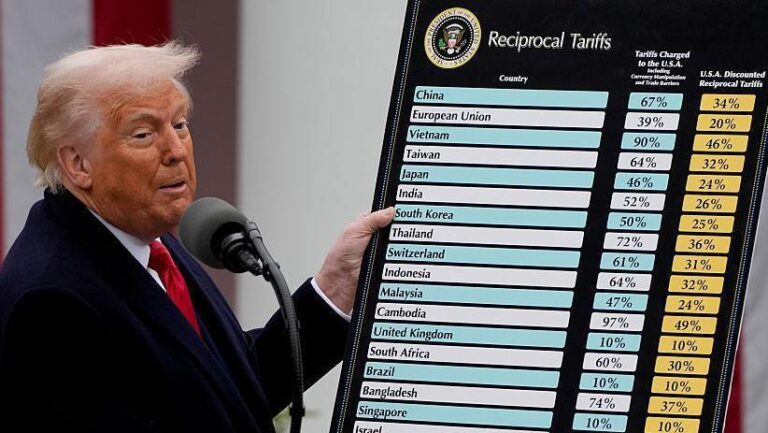The trade policies implemented during the Trump administration, particularly the tariffs imposed on Chinese goods, are now being credited with reshaping global commerce and accelerating a shift in trade dynamics between China and the Global South. Experts and market analysts highlight that these tariffs, initially aimed at curbing China’s economic influence, have inadvertently fostered the growth of new trade networks and partnerships outside traditional Western-dominated markets. This evolving China-Global South trade order presents significant implications for international economics, challenging established supply chains and signaling a strategic realignment in global trade relationships.
Trump Tariffs Accelerate Shift in Global Trade Dynamics Toward China and the Global South
Since the inception of the Trump administration’s tariff policies, there has been a marked realignment in global trade patterns. Protectionist measures aimed primarily at China have inadvertently encouraged reshoring and diversification of supply chains, but paradoxically, they have also intensified China’s economic outreach to the Global South. Developing countries across Africa, Southeast Asia, and Latin America are increasingly becoming integral nodes in China’s expansive Belt and Road Initiative, leveraging tariff-induced trade frictions to deepen partnerships and stimulate mutual growth. This paradigm shift not only reconfigures traditional trade routes but also amplifies China’s influence in emerging markets that were previously less entwined with global commerce.
Economic data illustrate these trends clearly:
| Region | China’s Export Growth (2016-2023) | Trade Volume with Global South |
|---|---|---|
| Africa | +32% | $220B |
| Southeast Asia | +45% | $340B |
| Latin America | +28% | $180B |
Key factors driving this new trade order include:
- China’s targeted infrastructure investments
- Preferential trade agreements with emerging economies
- Increased manufacturing relocation from traditional Western hubs
- Technology transfer and capacity-building initiatives
Emerging Economies Leverage New Trade Routes to Counter Western Economic Pressure
In response to escalating tariffs imposed by Western nations, emerging economies are rapidly adapting by expanding trade corridors that bypass traditional Western-dominated pathways. Countries across Asia, Africa, and Latin America are bolstering infrastructure projects, such as new shipping lanes and overland routes, to facilitate smoother trade with China and other partners in the Global South. This strategic pivot not only mitigates the impact of US-led economic pressure but also fosters a new multipolar trade framework where regional cooperation and diversified markets take precedence.
Crucially, this shift is characterized by a blend of state-led investment and private sector innovation, supported by initiatives like the Belt and Road and regional trade agreements. The following table highlights key emerging corridors enhancing connectivity and trade volume, illustrating how these routes serve as vital arteries in the Global South’s evolving trade ecosystem:
| Corridor | Primary Countries | Major Commodities | Annual Trade Growth |
|---|---|---|---|
| East Africa – China Rail Link | Kenya, Ethiopia | Manufactured Goods, Minerals | 12% |
| South America-Pacific Route | Peru, Chile | Agricultural Products, Copper | 9% |
| Central Asia Overland | Kazakhstan, Uzbekistan | Energy, Textiles | 15% |
| Southeast Asia Maritime Passage | Indonesia, Malaysia | Electronics, Palm Oil | 11% |
- Increased resilience: Diversified routes reduce dependence on Western-controlled logistics channels.
- Economic integration: Strengthened South-South trade partnerships amplify collective bargaining power.
- Technological advancements: Innovation in transport and customs technology speeds up cross-border exchanges.
Strategic Recommendations for Businesses Navigating the Evolving China-Global South Trade Landscape
Businesses seeking to thrive amid shifting trade dynamics between China and the Global South must embrace adaptive strategies that prioritize flexibility and diversification. Expanding supply chain networks beyond traditional Western partnerships allows companies to capitalize on emerging markets fueled by evolving economic policies and tariff landscapes. Embracing localized partnerships and investing in regional hubs can mitigate risks tied to geopolitical uncertainties while unlocking new avenues for growth. Furthermore, cultivating a deep understanding of regulatory environments across Global South nations is essential to navigate compliance barriers and leverage trade incentives effectively.
Data-driven decision-making, combined with proactive stakeholder engagement, will enable companies to anticipate shifts and pivot swiftly. Below is a snapshot of key considerations for businesses aiming to optimize their China-Global South trade approach:
| Strategic Focus | Key Actions | Anticipated Benefits |
|---|---|---|
| Diversification | – Broaden supplier base – Explore new markets |
Reduced dependency, enhanced resilience |
| Local Partnerships | – Joint ventures – In-market collaborations |
Improved regulatory navigation, market insight |
| Data Utilization | – Trade analytics – Real-time risk assessment |
Faster response, optimized operations |
| Regulatory Expertise | – Compliance training – Policy monitoring |
Reduced penalties, smoother customs clearance |
Concluding Remarks
As the global trade landscape continues to evolve, the repercussions of the Trump administration’s tariff policies remain evident, catalyzing a significant realignment in China’s economic partnerships with the Global South. This emerging trade order not only underscores the shifting dynamics of international commerce but also signals potential long-term implications for established economic powers. Observers will be closely monitoring how these developments reshape global supply chains and influence geopolitical relations in the years ahead.




